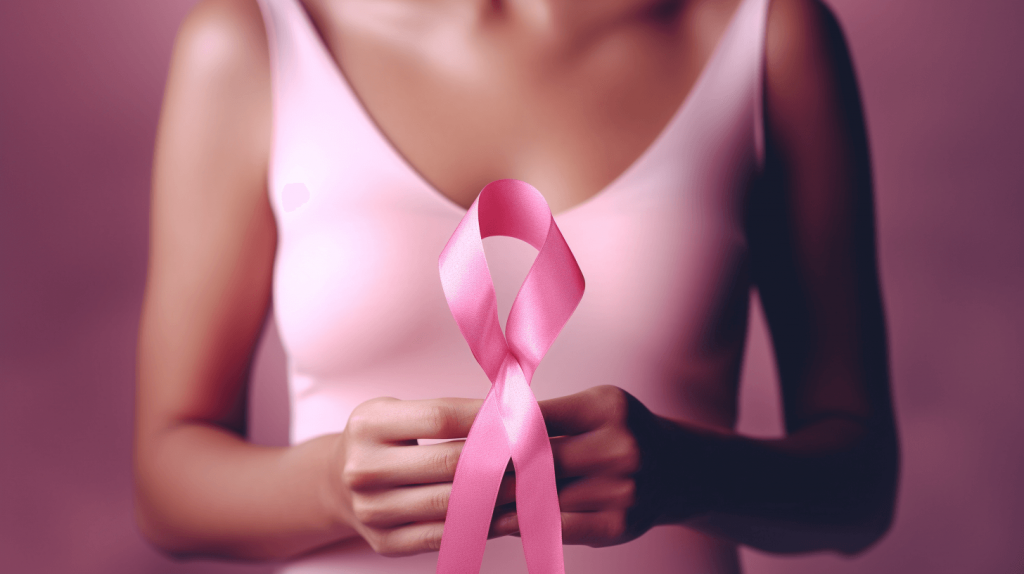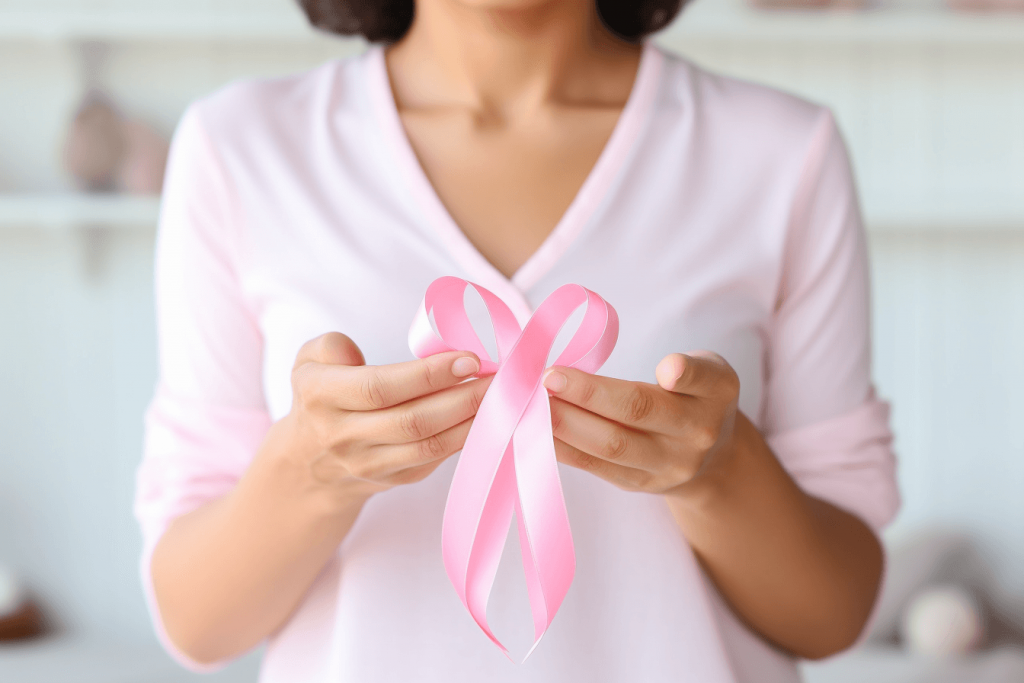Breast Cancer and Types
Published on 06 Jul 2021

What is Breast Cancer
Breast Cancer occurs in the cells of the breasts. Extensive research has been going on to decode the relationship between genetics and breast cancer, its relation to other forms of cancer, and whether there are treatment options other than mastectomy. Men and Women can both become potential victims of Breast Cancer. However, women are the common prey of this form of cancer, and men, quite rarely. In-depth research and structural support for spreading awareness about Breast Cancer have, by far, helped facilitate treatment and diagnosis of Breast Cancer to a considerable amount. Today, the survival rate of Breast Cancer patients has substantially increased, thereby decreasing the death rate of Breast Cancer patients due to a multitude of factors, including early detection of breast cancer, advanced treatment approaches, and comprehensive research for thoroughly analyzing and determining the disease.
What are the types of Breast Cancer?
Angiosarcoma
Angiosarcoma is one of the rarest cancers found in the lining of lymph vessels and blood vessels. Lymph vessels lie in the immune system and gather viruses, bacteria, and waste products of your body, thereby disposing of them. Angiosarcoma commonly occurs in the neck skin or head skin although it can occur anywhere in the human body. Angiosarcoma, in rare cases, can develop in other delicate skin regions of your body, one being the breast. Other deeper areas where it can form are the heart and liver. Furthermore, angiosarcoma can occur in patients whose bodies went through Radiotherapy. The treatment of angiosarcoma entirely depends on the region of the cancer. Radiotherapy, chemotherapy, and Surgery are the fundamental methods of treating it.

Symptoms of Angiosarcoma
- Swelling in the skin around cancerous cells.
- A lesion that can start bleeding on scratching.
- A lesion, similar to a bruise can expand over time.
- A swollen purple region, just like a bruise.
Ductal Carcinoma in situ (DCIS)
DCIS or Ductal Carcinoma in situ is a particular type of condition where abnormal cells start growing in the milk duct of the breast. DCIS is said to be the earliest and fundamental condition ofBreast Cancer. It does not spread to the other parts of the body from the milk duct, thereby having a minimal chance of becoming invasive. A mammogram is a type of cancer screening done for detecting a breast lump. DCIS isn't as harmful as other cancer forms; however, one needs to do specific tests for its treatment. A few of the methods of DCIS treatment are radiotherapy, breast-conserving surgery, and combinedSurgerywithRadiotherapyfor eliminating infected Breast tissues.
Symptoms of DCIS
- Formation of a breast lump.
- Bloody nipple discharge.
Inflammatory breast cancer
Inflammatory Breast Cancer occurs infrequently compared to other cancer types. This cancer advances swiftly by swelling up the affected breast while making it red and tender. Inflammatory Breast Cancer chiefly occurs when the skin's lymphatic cells get blocked by cancer cells, thereby covering it with a swollen red-like structure. According to research, inflammatory Breast Cancer is an unusual yet extreme cancer and can spread to different tissues, such as the closest lymph nodes. Inflammatory Breast Cancer is most often mistaken for a breast infection. Breast infections look remarkably similar to inflammatory cancer and have comparable symptoms, such as swelling and redness.
Symptoms of Inflammatory breast cancer
- Rapid swelling of one of the breasts
- Severe breast pain, causing tenderness and redness
- Expanded lymph nodes of the arms and both sides of the collarbone
- Unusual breast thickening, along with potential heaviness, and enlargement
- Breast colour changes, making it look like a bruise.
- Nipple flattening
Invasive Lobular Carcinoma
Invasive Lobular Carcinoma is a rare type of Breast Cancer that builds in the lobules (milk-producing glands) of the breast. It occurs when the cancer cells break out from the origin of the lobule while spreading to sensitive areas of your body, such as the lymph nodes. Invasive Lobular Carcinoma contributes to a small yet crucial portion of all types of breast cancers. The most basic and effective type of Breast Cancer originates in invasive ductal carcinoma (breast ducts).
Symptoms of Invasive Lobular Carcinoma
- Thickening of the breast
- A region of swelling and heaviness of the breast
- A peculiarly inverted nipple
- Inflammation of the area around the affected region
Lobular Carcinoma in Situ (LCIS)
LCIS or Lobular Carcinoma in Situ is an unusual condition where abnormal cells rapidly build in the lobules (milk glands) of the breast. According to experts, LCIS isn't a form of cancer. However, if diagnosed with it, it leads to a potential risk of being affected by cancer. LCIS shows up on mammograms very infrequently. This condition is usually detected through breast Biopsy treatment while detecting different conditions like a breast lump. Women diagnosed with LCIS have a substantial risk of becoming affected by invasive Breast Cancer. Seeking professional help is a must for potentially reducing the risk of obtaining Breast Cancer in the future.
Symptoms of LCIS
LCIS does not consist of potential symptoms or signs. One can discover it only while doing a Biopsy to detect unusual regions on the mammogram and breast lumps.

Paget's disease of the breast
Paget's disease is one of the rarest types ofBreast Canceroriginating in the nipple. It furthermore expands to the areola (the dark circle of the skin around the nipple). Paget's disease of the breast is comparatively different from Paget's disease of the bone, which is based on a metabolic bone condition. Paget's disease of the breast is commonly detected in women aged 50 and more. Women diagnosed with Paget's disease of the breast most often have potential ductalBreast Cancerat the cancer origin. They can also have invasiveBreast Cancer. A recent survey conducted suggests that there were limited cases of Paget's disease of the breast close to the nipple
Symptoms of Paget's disease of the breast
- Thickening of the breast
- Formation of a breast lump
- Inverted or flattened lump
- Redness on the breast
- Scary or flaky nipple skin
- Bloody nipple discharge
- Agitated itching
- Hardening of the nipple skin or areola
Recurrent Breast Cancer
RecurrentBreast Canceris the type of cancer that reappears after primaryCancer Treatment. The initialBreast Cancer Treatmentaims to remove the cancer cells. However, in many cases, a few of these cancer cells tend to survive by invadingCancer Treatment. Due to this, the surviving cancer cells, along with the undiscovered cells, expand, causing recurrent cancer. Recurrent cancer usually reappears after months or even years of the initial treatment. It can reoccur in the original area or spread to other sensitive areas of your body. Although recurrentBreast Cancercan be devastating and life-threatening, medications can substantially regulate the disease for a longer time.
Symptoms of recurrent cancer
- A distinctive breast lump or swelling of the breast
- Bloody nipple discharge
- Inflammation of the skin surrounded by the affected region
- Pain around the nipple area
Male Breast Cancer
Breast cancer rarely occurs in the breast tissues of men. Although Breast Cancer comparatively occurs more in women, men can also be affected by it. Male Breast Cancer can often affect older men. Younger men diagnosed with this type of cancer have a better chance of curing. Male Breast Cancer Treatment includes a type of Surgery to eliminate breast tissue. Many medications also involve Radiotherapy and Chemotherapy.

Symptoms of Male Breast Cancer
- Bloody nipple discharge
- Change in the appearance of the nipple
- Swelling, reddening, and scaling of the nipple
- Inverted nipple
- Swelling of the area surrounded by the breast region
- Thickening of breast tissues or a painless breast lump
What are the early signs of breast cancer?
PotentialBreast Cancersymptoms and signs are as follows:
- Change in the appearance, shape, and size of the breast
- Formation of a breast lump or thickening of the breast
- Dimpling, redness, and itchiness in the surrounding skin or nipple skin
- A strangely inverted nipple
- Purple discoloration on the breast
- Scaling, peeling, flaking, or crushing of the breast skin or areola
What are the causes of Breast cancer?
Once females hit the adolescence stage, their breasts start developing connective tissues, fat, and an array of lobules. Once the breast gets affected by cancer, the cells rapidly start multiplying. The tumour takes in energy and nutrients, thereby depriving the cells around it. Doctors have suggested that Breast Cancer originates when peculiar abnormal cells start accumulating in the breast region. These abnormal cells start to multiply rapidly, thereby forming a breast lump by accumulation. Cancer cells have a likelihood of expanding to other sensitive areas of your body, including lymph nodes. Breast Cancer commonly originates in the invasive ductal carcinoma, also known as the milk-producing glands.
According to experts, the fundamental causes ofBreast Cancerdepend on environmental, lifestyle, and hormonal factors. However, many people fall prey toBreast Cancerwithout an identified cause.Breast Cancerhas a substantial chance of occurring due to the complicated interaction of the environment with your genetic factors.
Many studies suggest that 10% ofBreast Cancercases are associated with gene mutations inherited from your ancestors. These inherited mutated genes tend to maximize the possibility ofBreast Cancer. BRCA1 (Gene 1) and BRCA2 (Gene 2) can considerably heighten the risk of ovarian and breast cancers.
What are the risk factors involved in breast cancer?
Risk factors ofBreast Cancermaximize the chances of getting affected by the cancerous growth. However, havingBreast Cancersymptoms doesn't necessarily mean you can fall prey to it. Cancer specialists have identified risk factors based on studying women affected byBreast Cancer. We've narrowed down a few of the most commonly occurring risk factors of breast cancer:
- AgeBreast Cancerhas a potential risk of developing by 0.06% at the age of 20. Accordingly, the figure extends to 3.84% by the age of 70.Breast Cancerthus substantially depends on the age of the person.
- Patients previously diagnosed withBreast Cancer. According to studies, women who were previously diagnosed withBreast Cancerhave a higher chance of regaining it. Furthermore, the formation of non-cancerous breast lumps can enhance the possibility of gettingBreast Cancer. Individuals who've had a history of ovarian, skin, fallopian tube, peritoneal, andBreast Cancerhave a considerably higher risk of obtainingBreast Cancer.
- Hormone Treatments A study done by NCI suggests that oral contraceptives substantially increase the risk ofBreast Cancer. Another study by ACS suggests that HRT (hormone replacement therapy), especially EPT (estrogen-progesterone therapy), increases the risk ofBreast Cancer.
- Consumption of Alcohol Studies suggests that Alcohol plays a vital role in the development of Breast Cancer. According to NCI (National Cancer Institute), women consuming Alcohol regularly have higher chances of getting Breast Cancer. Moderate alcoholics have a considerably lower chance of gaining breast cancer, with further research on the way.
- Breastfeeding and Estrogen Exposure A widened exposure to estrogen can advance the risk of Breast Cancer. Females whose periods start at an earlier stage or who are entering menopause late can become vulnerable to Breast Cancer. Breastfeeding for about a year or more can decrease the risk of Breast Cancer due to the reduction in estrogen exposure after breastfeeding and pregnancy.
- Radiation Exposure Patients undergoing cancer treatments such asRadiotherapyfor other cancer types have an inherent risk of obtaining cancer at a later stage.
- Breast implants A study conducted in 2013 suggests that women with cosmetic surgeries and breast implants had an increased risk of obtainingBreast Cancer. Implants play a crucial role in changing the structure of the breast tissue. The implants mask cancer cells during screening due to which one can become more vulnerable to underlyingBreast Cancer. More extensive research is required to prove this factor.
- Obesity Women who are overweight and are obese after menopause are more likely to fall prey toBreast Cancerdue to the enhanced estrogen levels and higher sugar intake.
Prevention of breast cancer
It is imperative to make minor lifestyle changes to reduce the risk of gettingBreast Cancer.
- Breast Cancer Screening Getting yourself professionally checked for Breast Cancer screening is a must when you are 25 or older. Consulting your doctor can help in detecting the underlying symptoms of Breast Cancer at an early stage.
- Analyze your breast Self-examination of breasts for awareness is the most crucial method of analyzing your breast by detecting lumps and other breast symptoms. Although breast awareness cannot inhibit breast cancer, it can help you examine and recognize possible risks and indications ofBreast Cancer.
- Drink occasionally Limiting yourAlcoholcontent can help decrease the risk of gettingBreast Cancer.
- Workout regularly Regular exercising can undeniably help bolster your muscles while decreasing the risk ofBreast Cancer. Exercise has several benefits. A 30-minute workout session can make your body internally and externally healthy.
- Focus on maintaining a healthy weight Obesity is one of the most common factors leading toBreast Cancer. Thus, maintaining the right weight for your body is vital for staying healthy and decreasing the risk ofBreast Cancer.
- Avoid postmenopausalHormone therapy. Postmenopausal therapy can substantially increase the risk ofBreast Cancer. Limited doses ofHormone therapyis best advised for reducing the exposure toBreast Cancer.
Diagnosis of breast cancer
The diagnosis ofBreast Canceris made after detecting abnormalities in routine screening of the breast. There are a multitude of diagnostic procedures:
- Breast Test A breast test involves detecting breast lumps and other substantial symptoms ofBreast Cancer. The patient has to stand in different positions while placing the arms in different positions.
- Imaging tests Imaging tests are the most primary yet fundamental tests done to recognize cancer symptoms.
- Ultrasound- Ultrasound, as the name suggests, makes use of sound waves for differentiating between liquid-filled cysts and solid mass.
- MRI Magnetic Resonance Imaging is similar to a mammogram and produces distinctive images to identify abnormalities and other symptoms ofBreast Cancer.MRIis commonly done after anUltrasoundor MMI for further analysis of cancer detection.
- Biopsy ABiopsyconsists of an analysis of extracted sample tissues in laboratories. ABiopsyhelps detect the cancerous cells of the breast. Furthermore,Biopsyhelps in detecting the type of cancer. Diagnosis ofBiopsyincludes staging cancer for tracing-
- The tumor size
- Whether it is noninvasive or invasive
- Affected areas

What are the treatment options for Breast cancer?
Breast cancer treatments solely depend on the cancer type, stage of cancer, age, health, hormone sensitivity, and other similar factors. The most common yet fundamental Breast Cancer treatments are as follows.
- Chemotherapy
- Surgery
- Radiation therapy
- Hormone therapy
- Biological therapy
- Chemotherapy Cytotoxic Chemotherapy is the most recommended therapy for treating cancer. Cytotoxic drugs play an indispensable role in killing cancer cells. Many cancer treatments involve adjuvant Chemotherapy to kill the cells after the Surgery. Many doctors regulate Chemotherapy before Surgery to shrink the tumour for its easy removal.
- Surgery There are a multitude ofSurgerytypes when it comes to treatingBreast Cancer. TheSurgerytype depends on individual preferences and the stage of diagnosis.
- Lumpectomy It is the removal of the tumour, along with a limited amount of unaffected tissues surrounded by it. A lumpectomy helps in preventing the cancer cells from spreading to other regions of the body. A lumpectomy is often preferred for cancer treatments with small tumours.
- Mastectomy is the removal of ducts, lobules, nipples, areola, fatty tissue, and some skin. Most surgeons eliminate muscles located in the chest wall and lymph nodes while performing mastectomy.
- Sentinel node biopsy-Breast Cancerusually spreads to the primary lymph nodes called sentinel lymph nodes.Breast Cancercan easily spread to the other parts of the body from the lymphatic system. If doctors detect cancer in sentinel lymph nodes, removal of the surrounding and close by nodes is necessary.
- Axillary lymph node dissection Removal of different armpit lymph nodes to detect cancer cells in the sentinel node is done by this type of Surgery.
- Reconstruction- After a mastectomy, many surgeons reconstruct the size of the breasts to make them look natural.
- Radiation therapy Radiotherapy usually takes place after a month of Surgery and involves providing limited doses of radiation to kill the surviving cancer cells.
- Biological Treatment Drugs such as Avastin, Herceptin, and Tykerb can help eliminate cancer cells to a certain extent.
- Hormone Blocking Therapy Hormone blocking therapy comes into play to prevent Breast Cancer (hormone-sensitive) from coming back after the treatment. Hormone therapy is commonly used for treating progesterone receptor and estrogen receptor cancers. They are commonly used for regulating hormone-blocking therapy following the Surgery but are also used for shrinking the tumour before the Surgery.
- Treatment based on stages
- Stage 0
In stage 0, the cancer is restricted only to the milk ducts, thereby being non-invasive. Non-invasive means that at this stage,Breast Cancerdoes not spread to different parts of the body. Non-invasiveBreast Canceris usually different from that of invasiveBreast Cancer. Stage 0 cancer is said to be precancerous and does not require any treatment. Nonetheless, it requires close observation. Some extreme cases requireRadiation therapyorSurgery. Stage 0 cancer does not involve any side effects or symptoms other than the formation of a breast lump and bloody nipple discharge. The survival rate of Stage 0Breast Canceris 99% or curable within 5 years. - Stage I-III
The most common treatments for stages I, II, and III include chemotherapy, surgery, andRadiotherapyadjuvant or neoadjuvantSurgery. Stage I Stage IBreast Canceris relatively small in size and usually does not expand to the lymph nodes. They chiefly spread to only a small portion around or near the breast in the sentinel lymph node (primary lymph node). The survival rate of stage IBreast Canceris 98%-100%.
Symptoms and side effects of Stage IBreast Cancerinclude breast lump, nipple discharge, swelling of the breasts, nipple retraction, scaly breast skin, and skin dimpling. Surgery, vaccines, SLNB, and drugs are the common methods of treating Stage IBreast Cancer. - Stage II
Stage II Breast Cancer is relatively larger than stage I cancer and most often spreads to the lymph nodes. The size of the IIA tumour is comparatively smaller than the IIB tumour. The size of the IIB tumour can be compared to a lime or a walnut.
The survival rate of Stage II cancer is 90% to 98%. Swelling of lumps and abnormal bonePainare the most common symptoms of Stage IIBreast Cancer. Immune checkpoint inhibitors and SLNB can be used for treating this stage of cancer. - Stage III
Stage III tumors are quite large and spread to the nearby tissues such as the breast skin or muscles, along with lymph nodes. Ulcers and swelling are the primary symptoms of Stage III Breast Cancer. The survival rate of Stage III Breast Cancer is 66% to 98%. Immunotherapy, chemotherapy, and Radiotherapy are the common treatments for Stage III Breast Cancer. - Stage IV
Stage IV Breast Cancer is extreme and spreads to the primary lymph nodes, along with other sensitive areas of your body. Stage IV Breast Cancer Treatment includes systematic drug therapy as cancer spreads to the brain, bones, lungs, and liver. Treatment for Stage IV cancer includes a combination of a BRAF inhibitor and a MEK inhibitor. Radiotherapy and Chemotherapy are other common treatment methodologies.
Symptoms of Stage IV cancer include breast pain, fatigue, swelling, skin discolouration, bloody nipple discharge, breast lump, insomnia, and digestive issues.
- Stage 0
Integrative Treatment
Medical treatments don't entirely help inCancer Treatmentand recovery. Small lifestyle changes such as scheduled routine, healthy diet, healthy sleep schedule, and regular workout can help ease the side effects ofCancer Treatment. Community support,Breast Cancerawareness, proper diet, and metabolism wellness plans help in recovery, provided one has a positive outlook towards life.
Life in Remission
Chemotherapy andRadiotherapycan be extremely overwhelming and painful. Although these treatments help heal your body, they affect it in certain ways.
Loss of appetite
BreastCancer Treatmentcan lower your food intake, thereby making it hard for you to get proper nutrition. To ensure providing nutrition to your body,
- Eat several smaller meals
- Try drinking smoothies or shakes as snacks
- Exercise regularly after consulting your doctor
Vomiting and Nausea
Nausea andVomitingare the major side effects ofCancer Treatment. One can experience denseVomitingwhile gettingChemotherapyor after it. Consulting your doctor to healNauseaandVomitingis best advised.
- Avoid citrus and greasy food
- Eat light foods like gelato, ice chips, etc. while nauseating
- Eat foods kept at room temperature
Weakness
Cancer treatments can leave you feeling exhausted, weak, and tired. Moreover, they can also make you depressed and lower your appetite. Try maintaining healthy sleeping schedules. Getting 8 hours of sleep every day, along with avoiding caffeine intake, can help bolster your mood. Take short walks or do moderate exercise. Staying fit and regular exercising can play a vital role in eliminatingFatigueand exhaustion.
Mouth Soreness
In many cases,Breast Cancercan leave your mouth and throat completely sore. Consulting your doctor to minimize thePainis recommended.
- Eat smaller size foods
- Don't consume spicy, salty, and citrusy foods
- Consult your doctor for medication to calm mouth soreness
Weight Gain
Many women notice slight weight gain due to extensiveBreast Cancertreatments. Dieting if you gain weight can be risky. Consulting your doctor is best advised. Many women diagnosed withBreast Cancercan gain weight from
- Overeating
- Lack of exercise
- Hormonal changes
- Depression and anxiety
- Medications
Hair Loss
Not allBreast Cancertreatments involve loss of hair. The loss of hair is directly dependent on theChemotherapytype. Some women might notice thinning of hair while others might lose chunks of hair, along with eyebrows and eyelashes. The process can be steady or instant, depending on yourCancer Treatment. Making use of hair wigs can be helpful if you feel uncomfortable. However, on the brighter side, your hair will regrow properly after theCancer Treatmentis over.
Skin discoloration
Breast cancer treatments such as radiotherapy, ixempra, and Radiotherapy can cause skin discolouration, making it look like a bruise. Many Pain medications are said to cause skin discolouration. Skin discolouration can also be the cause of other side effects like a rash. It usually fades away after Cancer Treatment.
Urine Discoloration
Urine discolouration takes place after Cancer Treatment. Usually, urine discharge is cloudy or darker. Bloody urine is another extreme side effect; consulting your doctor is extremely necessary in such cases. Sentinel lymph node surgeries include injecting blue dye into your system which can drain out in the form of urine. Dehydration can also lead to darker urine. However, this does not indicate any harm to your body. Make sure to keep your body hydrated consistently.
Weak vision
Weak vision is a rare side effect of cancer treatments, such as chemotherapy, hormonal therapies, and other targeted therapies. A few of the eye problems you might experience are conjunctivitis, itchy and red eyes, watery eyes, double vision, and blurry vision.
- Blink frequently while using smart devices
- Wear your glasses rather than lenses to ease irritation
- Don't rub your eyes as it can spread germs into the eyes

Vaginal Dryness
Vaginal dryness usually occurs in women after menopause. Breast Cancer in women with natural menopause and early menopause can cause vaginal dryness. The estrogen levels considerably drop due to which the vagina membranes get thinner and tight, and produce minimal lubricating fluid. Vaginal dryness usually occurs due to various cancer treatments including hormonal therapy and chemotherapy
- Use a lubricant to avoid the vagina from drying
- Make use of a vaginal moisturizer
Additional Side effects
Furthermore, the side effects of cancer treatments include sweating, swelling, change in smell and taste, urinary tract infection, scar tissue formation, runny nose, skin sensitivity, seroma, etc.
How canZenOnco.iohelp?
- Nourish yourself: It is vital to consume nutritious food, which is rich in antioxidants, good fats, vitamins, and minerals, especially after months of Chemotherapy and other targeted therapies. Maintaining a healthy diet is crucial towards developing a strong immunity, and working towards a healthy life in remission. Stay fit: After undergoing months of Cancer Treatment and therapies, it is essential to maintain a healthy weight and positive outlook towards life. Invest your time in light exercises, Yoga sessions, and meditation, and try to maintain a normal lifestyle by indulging in your day-to-day activities.
- Keep calm: Breast Cancer is stressful and undoubtedly messes up an entire routine by affecting overall health. However, staying calm and positive can reduce Stress and maximize the growth of healthier tissues that enhance strong metabolism. Practice gratitude, meditate often, and other factors can help a cancer patient stay all normal.
- Cancer-proof your home: Making certain lifestyle changes is necessary. Keeping the diet compact and healthy for better fitness goals is mandatory. Take care and be aware of hazardous substances in the environment by maintaining hygiene and sanitation. Choose secure home decor systems that supply cancer-proof materials resulting in sustainable living.
- Get community support: Most cancer patients undergo Depression and Anxiety after undergoing treatment plans. But everyone can benefit from talking to support groups, professional counsellors, and loved ones. It is important to share your thoughts and be hopeful at such troubling times. Visit our official website to learn more about our wellness protocol and how it helps to have a positive outlook towards life.
Elevate Your Journey with Integrative Oncology
For personalized guidance on cancer treatments and complementary therapies, consult our experts atZenOnco.ioor call+91 9930709000






















